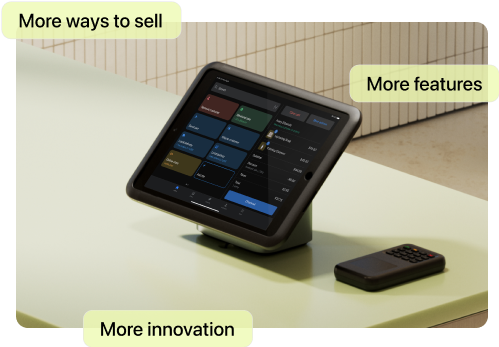In today’s global marketplace, understanding tariffs is essential for merchants and aspiring entrepreneurs alike. A tariff is a tax on imported goods—it can create ripple effects in pricing, consumer behavior, and the competitive landscape. For instance, when US lawmakers imposed a 25% tariff on imported steel in 2018, local businesses felt the tension as prices ballooned, creating both opportunities and challenges.
What is a tariff?
A tariff is a tax levied by governments on goods imported from foreign countries. Tariffs are intended to encourage consumers to purchase domestic alternatives, as the prices of imported foreign-produced products will increase due to the tariffs.
For merchants, understanding tariffs can significantly impact pricing strategies. If importing materials incurs additional costs due to tariffs, it could still affect the prices domestic consumers are charged. Without a plan to account for price fluctuations of inputs, businesses may find themselves at a disadvantage in a competitive market.
Why are tariffs imposed?
Tariffs can serve a number of purposes: they generate revenue for governments, protect domestic industries, and can be used as tools in trade negotiations. Historically, tariffs contributed significantly to government income; in fact, until the federal income tax was introduced in 1913, they accounted for up to 95% of government funds.
Tariffs can alter both the macro economic landscape and the consumer landscape for entrepreneurs. When materials become costlier due to tariffs, businesses might need to adapt by sourcing locally or adjusting product lines to remain competitive.
Impacts on consumers and businesses
While tariffs may provide protection for local markets, they often lead to higher prices for consumers. For instance, a 50% tariff on Italian leather handbags may render them unaffordable for many. Merchants must anticipate how these economic shifts affect customers’ purchasing power. Engaging directly with audiences through surveys or focus groups can provide invaluable insights into consumer behavior and sensitivity toward price changes.
Additionally, according to The Economist, tariffs can provoke retaliatory measures from other nations, resulting in trade wars that threaten global supply chains. After the US announced it would levy a 10% duty on all imports from China, China said it would implement retaliatory tariffs on gas, oil, and energy as well as agricultural machinery and large-engine cars imported from the US.
Understanding this dynamic is vital for businesses, as it influences everything from product sourcing to sales forecasting.
Why your business needs to pay attention
For commerce merchants and entrepreneurs, knowing the nuances of tariffs is not only an academic exercise; it’s a survival skill. Tariffs can transform market landscapes overnight. Keeping abreast of tariff changes allows businesses to pivot swiftly, seizing opportunities before competitors do. This knowledge can empower entrepreneurs to enhance their business strategies, ensuring sustainability and growth in unpredictable times.
Key takeaways
- Understand tariffs: Familiarizing yourself with tariffs can inform pricing strategies and sourcing decisions.
- Monitor policy changes: Stay updated on tariff policies affecting your industry through government and trade news sources.
- Engage with your audience: Use focus groups or surveys to gauge consumer behavior in response to pricing shifts.
By adopting a proactive approach and strategic plan, entrepreneurs can make informed decisions to support ongoing business growth.
Disclaimer: The Shopify blog acknowledges the importance of keeping merchants updated on the evolving trade environment. To that end, we have updated the definitions and examples in this article to reflect our understanding of the current state of US tariffs. This Shopify article has been written for informational and educational purposes only; it should not be used as the basis for business or legal decisions.
Read more
- What Is a Universal Product Code (UPC)? Definition and Guide
- A Guide to Product Liability for Business Owners
- How To Use the Indirect Method for Cash Flow Statements
- What Is a Cash Flow Analysis? How To Do a Cash Flow Analysis
- 8 Ways Shopify Capital Can Help Grow Your Small Business
- 9 Types of Startup Business Loans and Financing
- What Is Material Requirements Planning (MRP)? Definition and Guide
- What Is a Tax Identification Number (TIN)? Definition and Guide
- What Are Operating Expenses? Definition and Guide
- What Is Corporate Culture? Definition and Guide
What is a tariff? FAQ
What is a tariff in simple terms?
A tariff is a tax on goods and services imported into a country. It is typically used to increase the price of imported goods, making them more expensive than domestic goods and services, thus protecting domestic industries.
What is the main purpose of a tariff?
Tariffs are often used to protect domestic industries from foreign competition and generate revenue for the government.
How do tariffs affect consumer prices?
Tariffs often lead to higher prices for imported goods because not only are they levied on an imported finished good but they also levied on raw goods needed to produce finished domestic goods. This can influence consumers to consider purchasing 100% domestic manufactured products instead.
How can I stay updated on tariff changes
Tariffs often lead to higher prices for imported goods, influencing consumers to consider purchasing domestic products instead.
What are the downsides of tariffs?
While tariffs may protect domestic industries, they can also lead to higher prices for consumers. Additionally, they may provoke retaliatory measures from other countries, leading to trade wars.
Where can I find more information about tariffs and global trade?
For comprehensive insights on tariffs and their impact, the World Trade Organization offers extensive resources.





